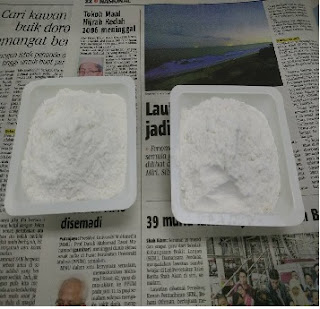Title: Sieving
Objectives:
1. To determine the size and size
distribution of a particular powder.
2. To classify and differentiate the powder
based on its diameter.
Date
of experiment: 16th November 2015
Introduction
Sieving
is one of the oldest particle size analysis methods. This sieving method is
used to classify powders and granules by particle size distribution. The sieves
are arranged in decreasing order of the sieve number. The particle size that
passes through the sieve also decreases from top to bottom. In this experiment,
100g of microcrystalline cellulose (MCC) is weighed and placed on the uppermost
sieve. The sieves are shaken rigorously on a mechanical shaker for a certain
period. The MCC powder collected at each sieve is weighed and recorded.
Apparatus:
1.
Mechanical sieve
2.
Sieve nests
3.
Large weighing boats
4.
Spatula
5.
Electronic balance
Materials:
1.
Microcrystalline cellulose
(MCC)
2.
Lactose
Experimental
Procedure:
1.
100g MCC and lactose were
weighed.
2.
The sieve nest was prepared in
descending order (largest diameter to the smallest from top to bottom).
3.
The powder was placed at the
uppermost sieve and the sieving process was allowed to proceed for 20 minutes.
4.
Upon completion, the powder at
every sieve was collected and the weight is measured.
5.
The particle size distribution
of MCC and lactose were plotted in the form of a histogram.
Results :
Lactose
|
||||||
Diameter of sieve nest (µm)
|
<150
|
150-212
|
213-299
|
300-354
|
355-425
|
>425
|
Weight (g)
|
0.3021
|
8.1646
|
6.46963
|
3.2764
|
48.3759
|
33.3162
|
MCC
|
||||||
Diameter of sieve nest (µm)
|
<53
|
53-149
|
150-199
|
200-299
|
300-500
|
500
|
Weight (g)
|
17.5855
|
76.8885
|
3.3547
|
1.8236
|
0.2216
|
0.1261
|
Discussion :
Particle
size analysis is a particle size measurement, using variety of name of the
technical procedure or laboratory techniques which determine the range of
particle size or the average particle size of the size in the powder or liquid
form. In this experiment, the sieve method is used. There are two types of sieve analysis, dry
sieving and wet sieving. Dry sieving can used in cement industry, fertilizer
industry and building construction while wet sieving is special used in ceramic
industry, pharmaceutical industry and cosmetic industry. Sieve is a device for
separating particles of different sizes. Coarse particles which are in
different particle size are separated by passing through the sieve nest with
different diameters which arrange from largest diameter to the smallest
diameter.
There
are some sources of errors occurred during the experiment. First and foremost,
apparatus used in the experiment contains impurities. Since the sieve nest is
repeated used by several groups in the experiment, the sieve nest is not clean
and contain impurities. This alter the final results which is the average
particle size of lactose and MCC.
Therefore, we must wash and dry the sieve nest before use in other to
obtain more accurate result. Next, the weight of lactose and MCC are different
before and after the experiment. This is due to the dispersed and spilled of
the tiny size and light powder to the surrounding. The precaution of this error
is do the experiment in a closed area and repeat the experiment to get the
average result.
Questions:
1.
What are the average particle size for both lactose and MCC?
Between 355-425
2.
What other methods can you use to determine the size of a particle?
Microscope method-an excellent technique
because we can look at the shape and size of the particles directly.
Coulter counter-it uses electrical stream
sensing zone method where it measures the material that can be suspended in an
electrolyte.
Laser light scattering method-it uses laser
diffraction which results from interaction of light with particles.
Dynamic light scattering method-Brownian
motion principle is used to measure particle size and the photon correlation
spectroscopy (PCS) analyses the changing patterns of laser light scattered.
3.
What is the importance of particle size in a pharmaceutical
formulation?
Particle size is important in pharmaceutical
formulation because it has an effect on the absorption of drugs. Particle size
also affects the disintegration time of the tablets. Besides, the particle size
of a pharmaceutical semi-solid dosage influences the efficacy, safety and
performance of the dosage form. It affects the penetration of the drug into the
skin and also the flux rate of the active ingredient.
Conclusion:
Sieving is one the methods that can be used
to separate solids such as powders of different sizes. This experiment clearly
shows that methylcellulose crystalline (MCC) and lactose have different
particle size distribution and can be differentiated according to sizes by
using a mechanical shaker of different apertures at each layer to sieve the
powders. From the results, it can be concluded that the particle size distribution of lactose is larger than that of MCC because most of the lactose particles are accumulated at the sieve nest of diameter 355-425
References:



No comments:
Post a Comment